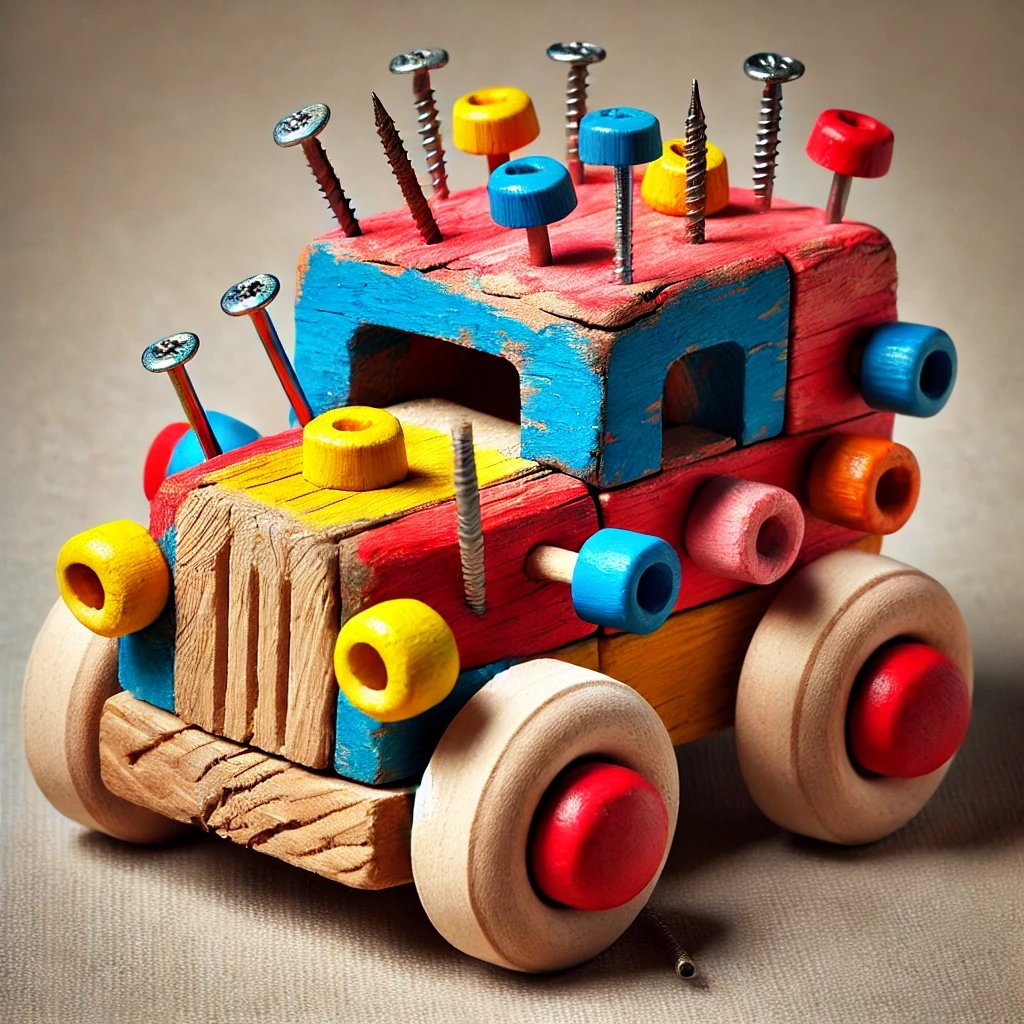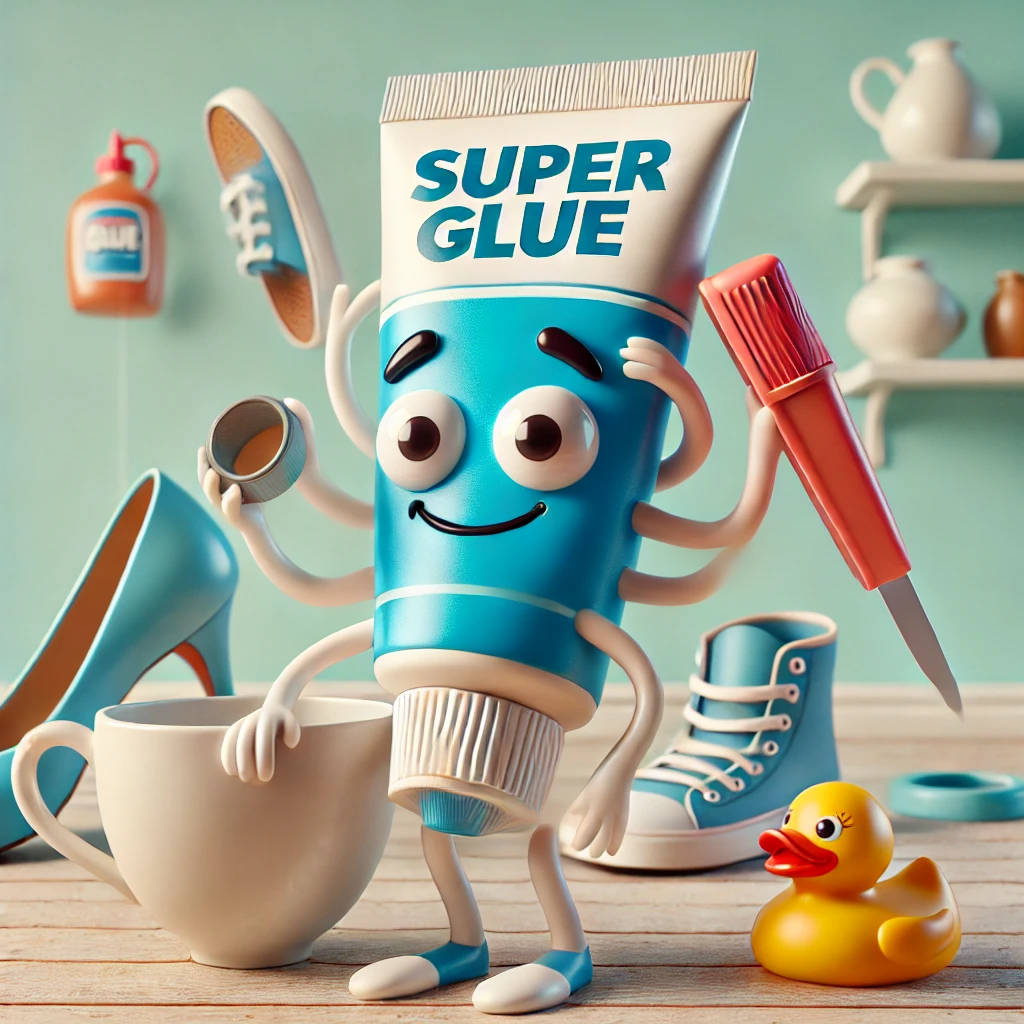Have you ever stood in the glue aisle feeling overwhelmed by endless options? Choosing the right glue can sometimes seem tricky! Different brands, types, and flashy promises can make it tempting to grab whatever catches your eye. But here’s the truth: not all glues are created equal. Using the wrong glue can turn a simple project into a frustrating mess and leave you doubting the effectiveness of adhesives altogether.
I’ve been there. For years, I used Elmer’s glue for woodworking and was always disappointed. Nails and screws became my go-to, even for projects where they weren’t ideal. Then I discovered the problem wasn’t the glue—it was me. I was using the wrong type for the job. Once I switched to proper wood glue, everything changed.

Let’s break down the most common types of glue and how to use them correctly. That will make choosing the right glue a much simpler undertaking!
PVA Glues: Versatile and Reliable
Wood Glue: Perfect for woodworking, wood glue penetrates wood fibers to create a bond often stronger than the wood itself. Use it for furniture repairs, securing joints, or edge-to-edge board joins. Key tips:
- Clamp your project while it dries.
- Clean excess glue with a damp cloth before it dries—it won’t disappear later!
- For outdoor projects, choose water-resistant wood glue.
Elmer’s Glue: Also known as white craft glue, this is ideal for lightweight projects like paper crafts, cardboard, and school projects. Avoid using it for heavy-duty tasks—it’s not designed for structural bonding.
Mod Podge: A glue, sealer, and varnish all in one, Mod Podge is excellent for decoupage and craft projects. Use it to adhere paper to various surfaces, then apply a finishing coat for durability.

Hot Glue: Quick Fixes and Temporary Bonds
Hot glue is excellent for quick projects, especially with porous materials like wood and cardboard. However, it’s not ideal for glass or metal and shouldn’t be used for long-term bonds. Remember, hot glue is a temporary solution—don’t rely on it for permanent repairs.
Epoxy: The Heavy-Duty Solution
Epoxy comes in two-part syringes containing resin and hardener. When mixed, they create an extremely strong bond. Ideal for:
- Metal parts and heavy machinery repairs
- Bonding plastics, ceramics, and glass
- Industrial and automotive uses
Tips:
- Mix carefully according to instructions.
- Work quickly—epoxy starts setting within 10 minutes. Only mix what you can use in that time.

Super Glue: Small Repairs Made Easy
Super glue (cyanoacrylate) is perfect for small repairs on non-porous surfaces like metal, plastic, or glass. Use sparingly—a little goes a long way! Be cautious with your fingers; acetone can help if you get stuck.
Contact Cement: Instant, Strong Bonds
Unlike other adhesives, you apply contact cement to both surfaces, let it dry, and then press them together for an instant bond. It’s commonly used for:
- Laminate to wood applications
- Rubber and plastic bonding
- Leatherwork and shoe repair
Key Considerations:
- Align carefully—once bonded, there’s no repositioning.
- Use in a well-ventilated area due to strong fumes.
Surface Preparation: The Secret to Strong Bonds
No glue will work well without proper surface preparation. Ensure surfaces are:
- Clean and free of dust, oil, or moisture
- Lightly sanded (for non-porous materials) to improve adhesion
- Aligned perfectly before applying glue
Conclusion
Choosing the right glue doesn’t have to be daunting. By understanding different types of adhesives and their ideal uses, you can ensure strong, lasting bonds for any DIY project. Whether it’s wood glue for furniture, epoxy for heavy-duty repairs, or super glue for quick fixes, the right choice makes all the difference.


